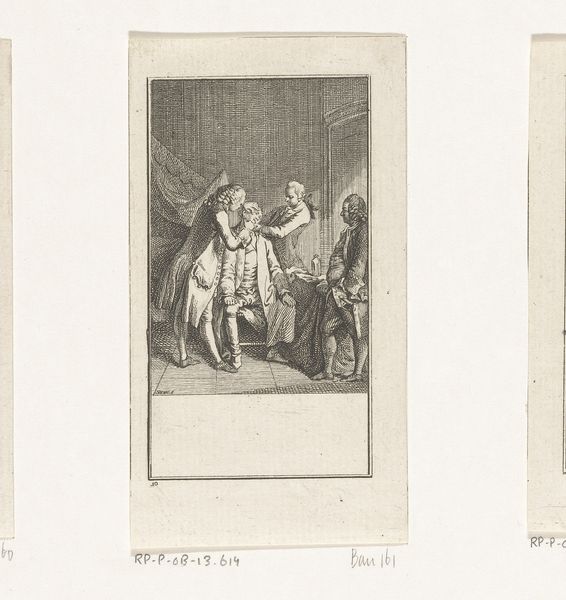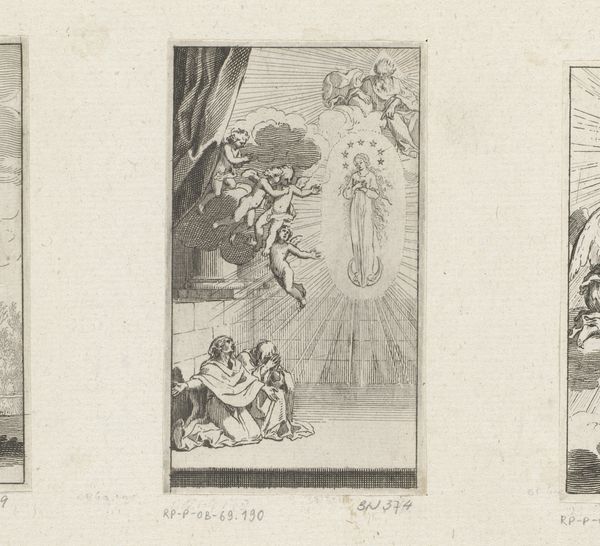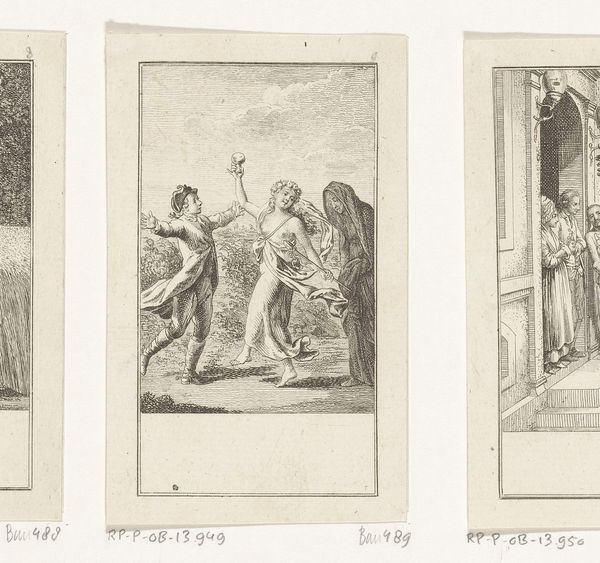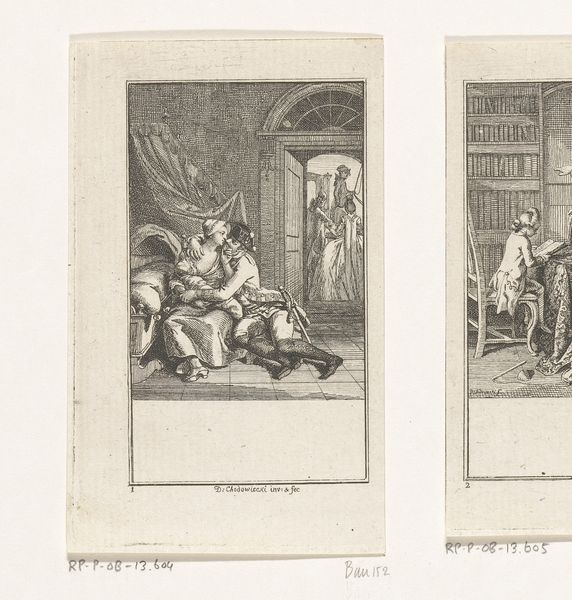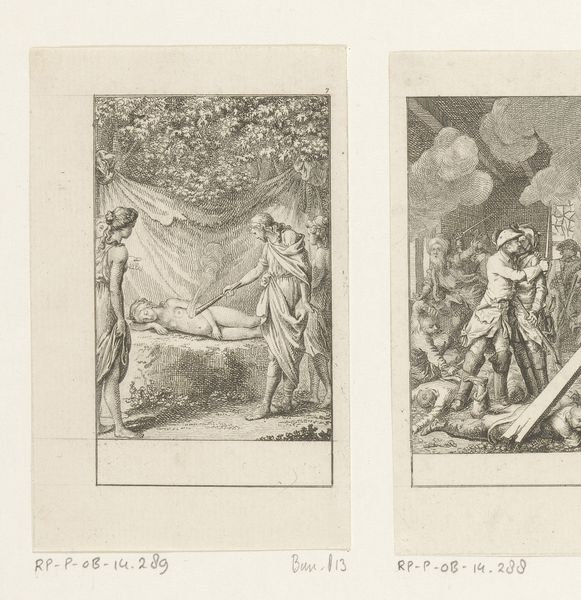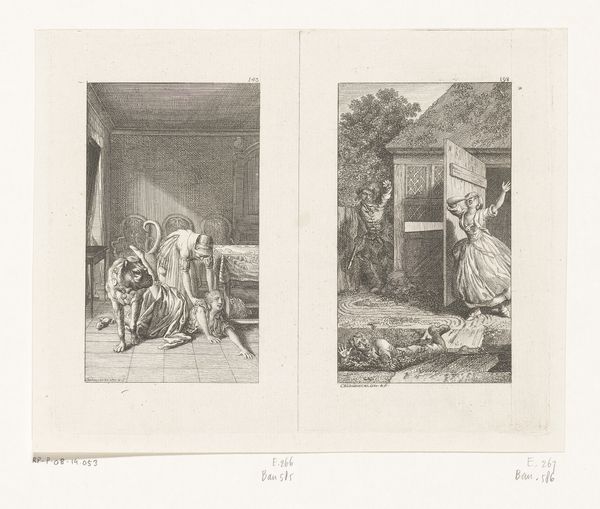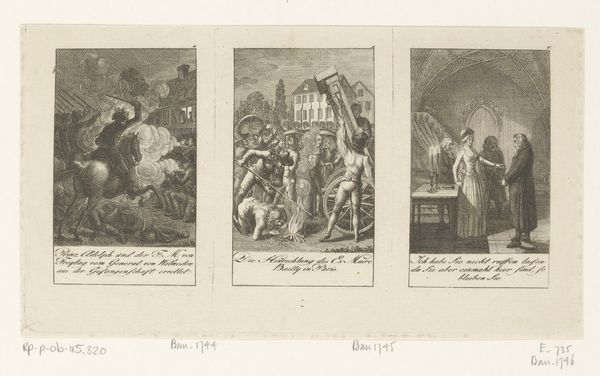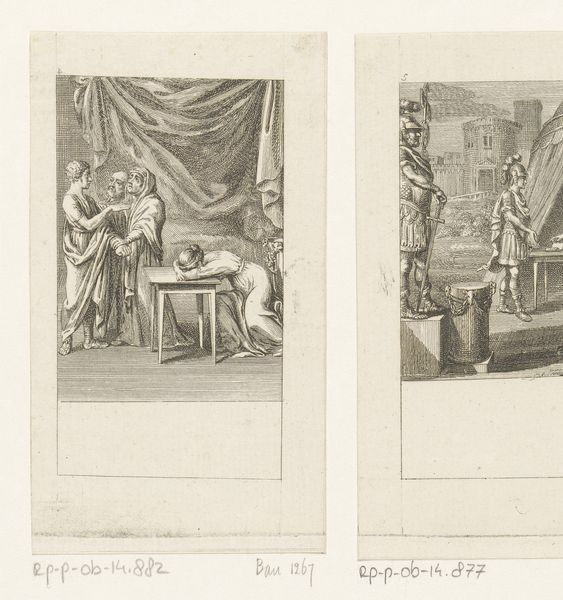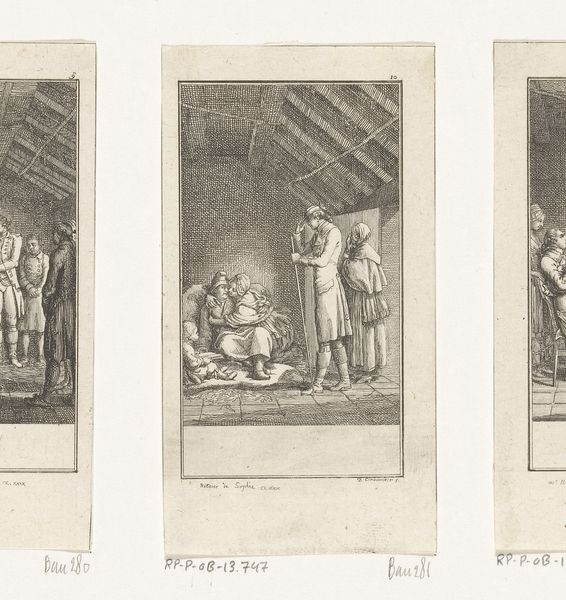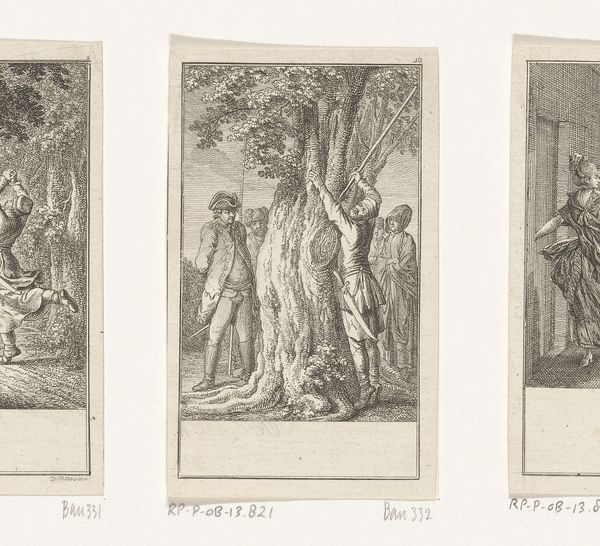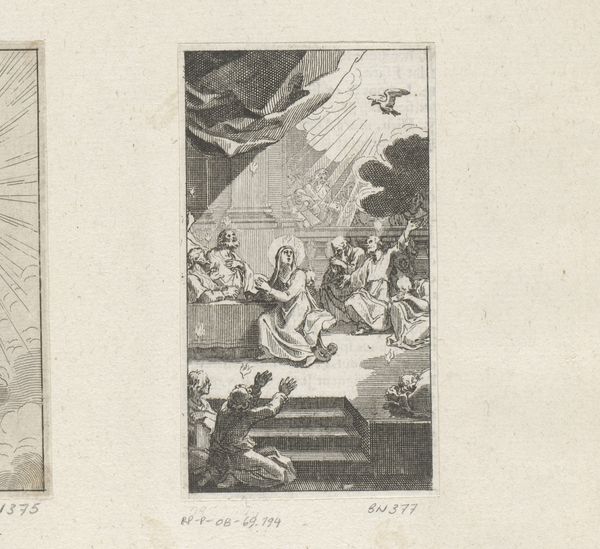
Dimensions: height 111 mm, width 66 mm
Copyright: Rijks Museum: Open Domain
Editor: So this is "Gevangene en cipier" ("Prisoner and Jailer") by Daniel Nikolaus Chodowiecki, from 1779. It's an etching, and the stark contrast between the figures is really striking. It feels very...confined, almost claustrophobic. What catches your eye in this print? Curator: The composition is meticulously constructed. Note how the diagonal lines of the jailer's body and the prisoner’s slumped form create a tension, a visual push and pull that directs the viewer’s eye. Consider, too, the rigorous lines of the architecture contrasting the softer modeling of the bodies. Editor: Yes, that is well described! The lines of the architecture *are* so precise, really heightening the sense of confinement. Is it trying to say something beyond the surface narrative, maybe about social structures? Curator: Perhaps, but that would be an interpretation derived from the world *outside* of the etching itself. Consider the etching purely on its own terms, its *internal* elements. The strategic use of light and shadow contributes significantly. The jailer stands partially illuminated, suggesting a position of power, while the prisoner remains shrouded in darkness, both literal and figurative. Do you see any way the materiality of the print medium – etching – emphasizes this symbolic construction? Editor: That’s fascinating. So, rather than seeking external context, we delve into the print’s lines, shadows, the relationship of forms within the pictorial space, to uncover meaning? Curator: Precisely. Focus on what is demonstrably present in the visual syntax. How the artist deploys each visual element dictates interpretation. Editor: I see. Thanks, that helps to clarify what's important. Curator: Indeed. An approach that rewards attention to detail.
Comments
No comments
Be the first to comment and join the conversation on the ultimate creative platform.
